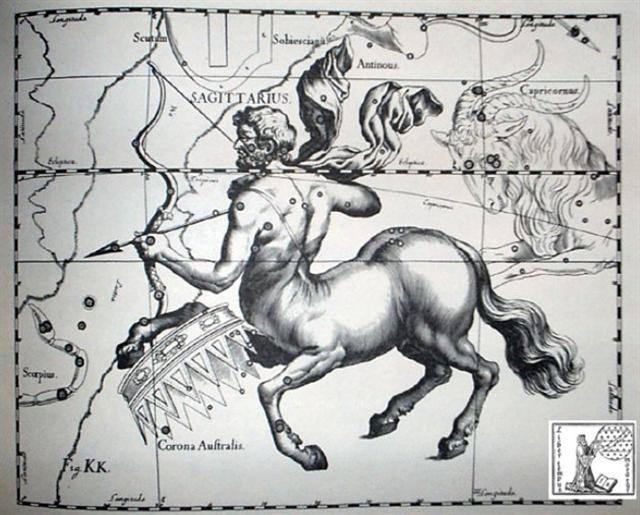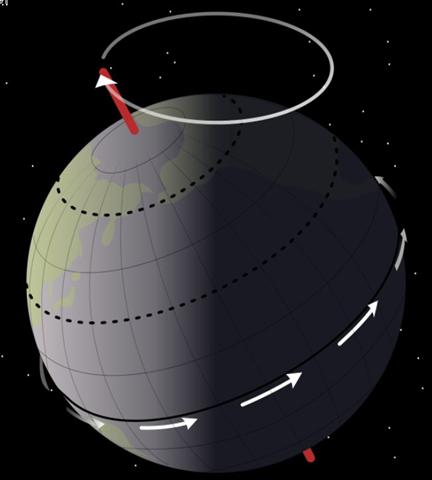|
... Day 80 in the Gregorian
calendar was March 21 and right
ascension 0h was there because the
Pope had decided this should be the
day of spring equinox.
... Ecclesiastically, the
equinox is reckoned to be on 21
March (even though the equinox
occurs, astronomically speaking, on
20 March in most years) ...
... When the Pope
rearranged the day for spring
equinox from number 84 ('March 25)
to number 80 (ēMarch 21) the earlier
Julian structure was buried, was
covered up (puo). At the same
time the Pope deliberately avoided
to correct the flow of Julian
calendar days for what he may have
regarded as 4 unneccesary leap days
prior to the Council of Nicaea. Thus
his balance sheet for days was in
order. The day numbers counted from
the equinox were increased with 4
and this was equal to allowing the 4
'unneccessary' leap days to remain
in place. But he had moved spring
equinox to a position which was 4
days too early compared to the
ancient model ...
These '4 unneccessary leap
days' (prior to the Council of
Nicaea) were equal in number to the
precessional distance in time
between the Pope and the time of
rongorongo. The Gregorian calendar
could therefore be easily understood
by the Easter Islanders. The Pope
had created a 'crooked calendar' but
since his time the precession had
fixed it.
... When the Pope Gregory
XIII updated the Julian calendar he
did not revise what had gone wrong
before 325 AD (when the Council of
Nicaea was held). Thus the stars
were still 3-4 days 'out of tune'
compared to the calendar ... the
Gregorian 'canoe' was 'crooked'. His
calendar was not in perfect
alignment with the ancient star
structure. Because he had avoided to
adjust with the effects of the
precession between the creation of
the Julian calendar and the Council
of Nicaea in 325 A.D. [The Julian
equinox was in the 3rd month of the
year and in its 25th day; 3-25.]
Or as told in the language
of myth:
... There is a couple
residing in one place named Kui
and Fakataka [meaning
Creating a Cycle]. After the
couple stay together for a while
Fakataka is pregnant. So they go
away because they wish to go to
another place - they go. The canoe
goes and goes, the wind roars, the
sea churns, the canoe sinks. Kui
expires while Fakataka swims.
Fakataka swims and swims,
reaching another land. She goes
there and stays on the upraised reef
in the freshwater pools on the reef,
and there delivers her child, a boy
child. She gives him the name
Taetagaloa [meaning Not
Tagaroa]. When the baby is born
a golden plover flies over and
alights upon the reef.
(Kua
fanau lā te pepe kae lele mai te
tuli oi tū mai i te papa).
And so the woman thus names various
parts of the child beginning with
the name 'the plover' (tuli):
neck (tuliulu), elbow (tulilima),
knee (tulivae).
They go inland at the land.
The child nursed and tended grows
up, is able to go and play. Each day
he now goes off a bit further away,
moving some distance away from the
house, and then returns to their
house. So it goes on and the child
is fully grown and goes to play far
away from the place where they live.
He goes over to where some work is
being done by a father and son.
Likāvaka is the name of the
father - a canoe-builder, while his
son is Kiukava.
Taetagaloa
goes right over there and steps
forward to the stern of the canoe
saying - his words are these: 'The
canoe is crooked.' (kalo ki ama).
Instantly Likāvaka is enraged
at the words of the child.
Likāvaka says: 'Who the hell are
you to come and tell me that the
canoe is crooked?' Taetagaloa
replies: 'Come and stand over here
and see that the canoe is crooked.'
Likāvaka goes over and stands
right at the place Taetagaloa
told him to at the stern of the
canoe.
Looking forward,
Taetagaloa is right, the canoe
is crooked. He slices through all
the lashings of the canoe to
straighten the timbers. He realigns
the timbers. First he must again
position the supports, then place
the timbers correctly in them, but
Kuikava the son of
Likāvaka goes over and stands
upon one support. His father
Likāvaka rushes right over and
strikes his son Kuikava with
his adze. Thus Kuikava dies.
Taetagaloa goes over at once
and brings the son of Likāvaka,
Kuikava, back to life. Then
he again aligns the supports
correctly and helps Likāvaka
in building the canoe. Working
working it is finished
... |



















